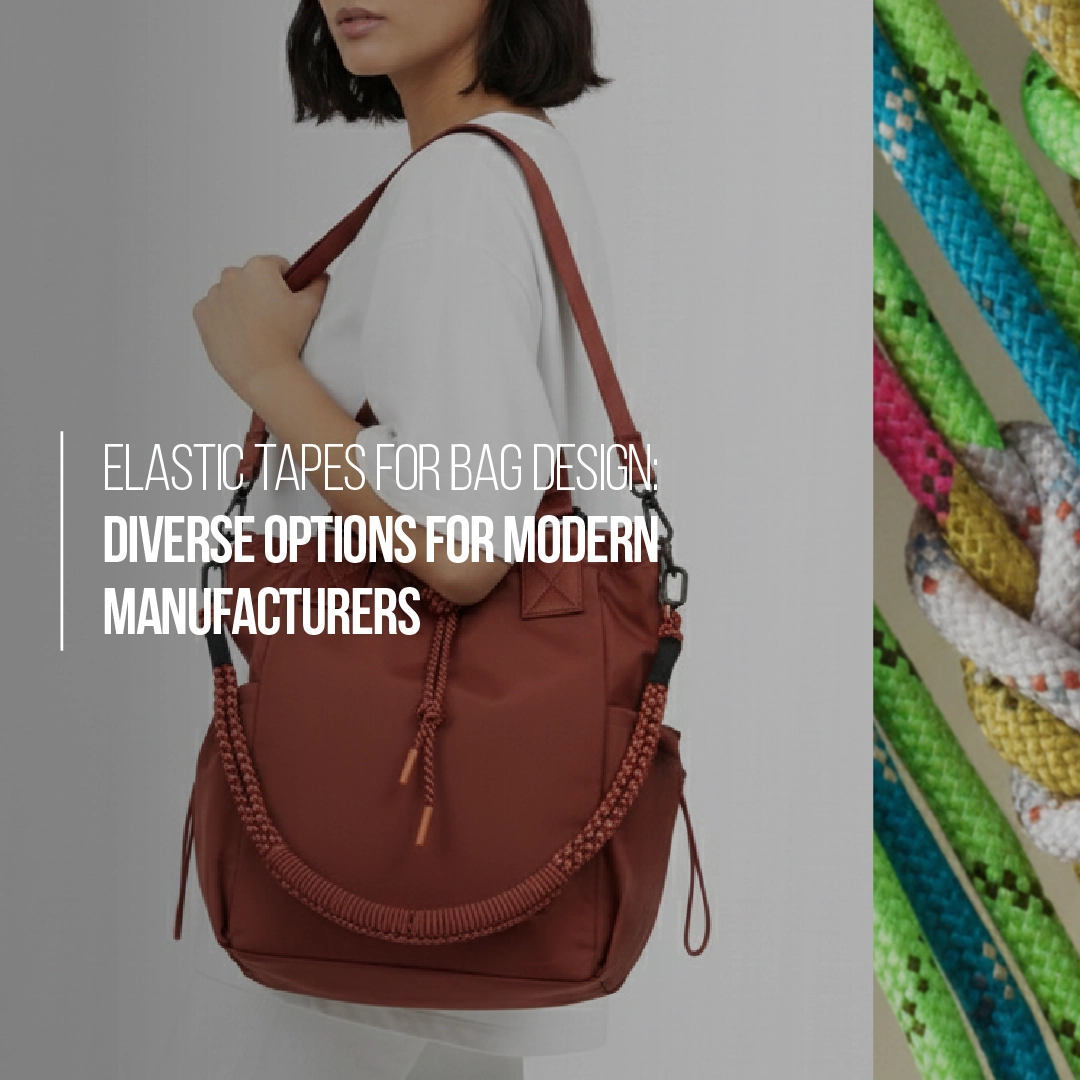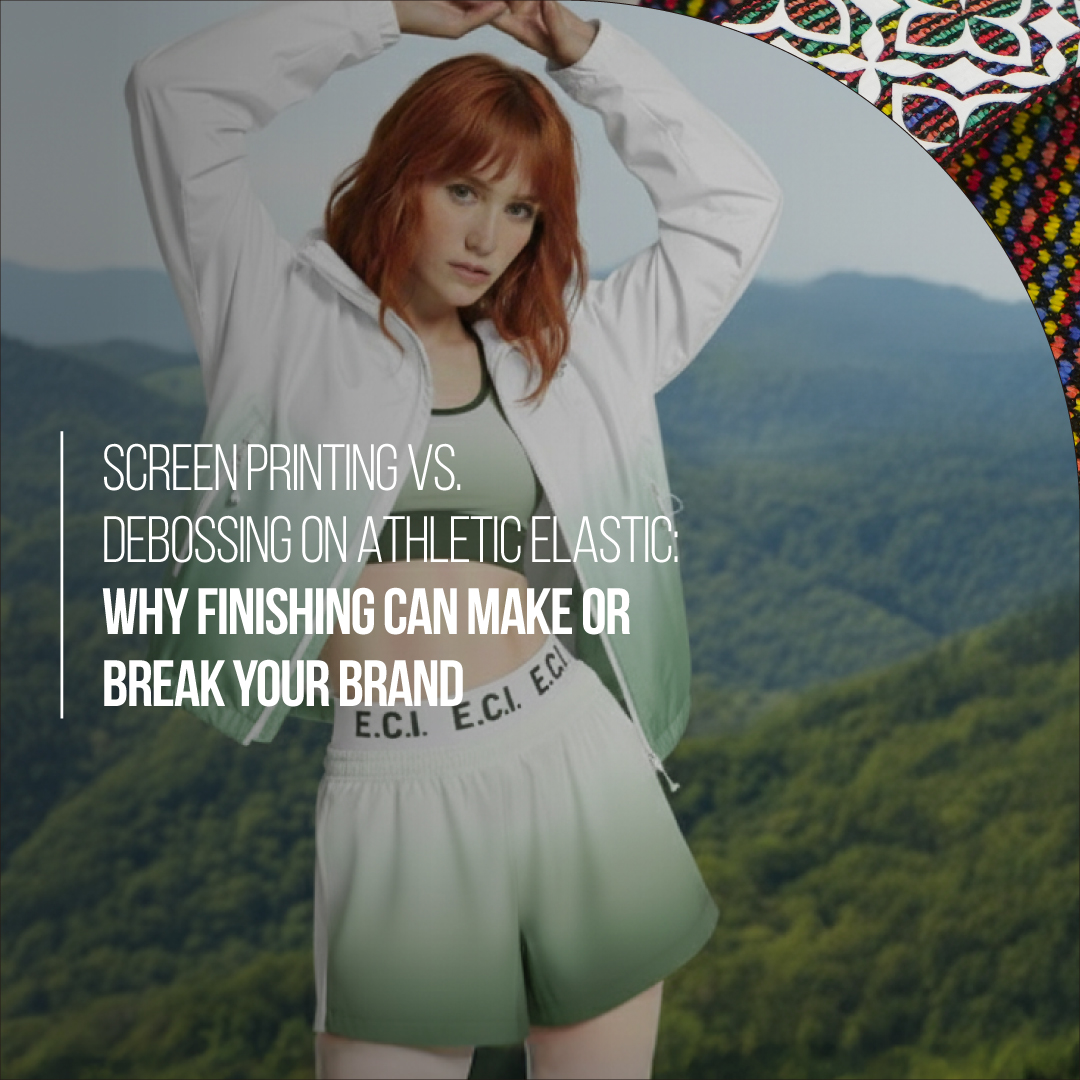Crochet Knit vs Warp Knit: Complete Guide to Knitting Structures for Apparel
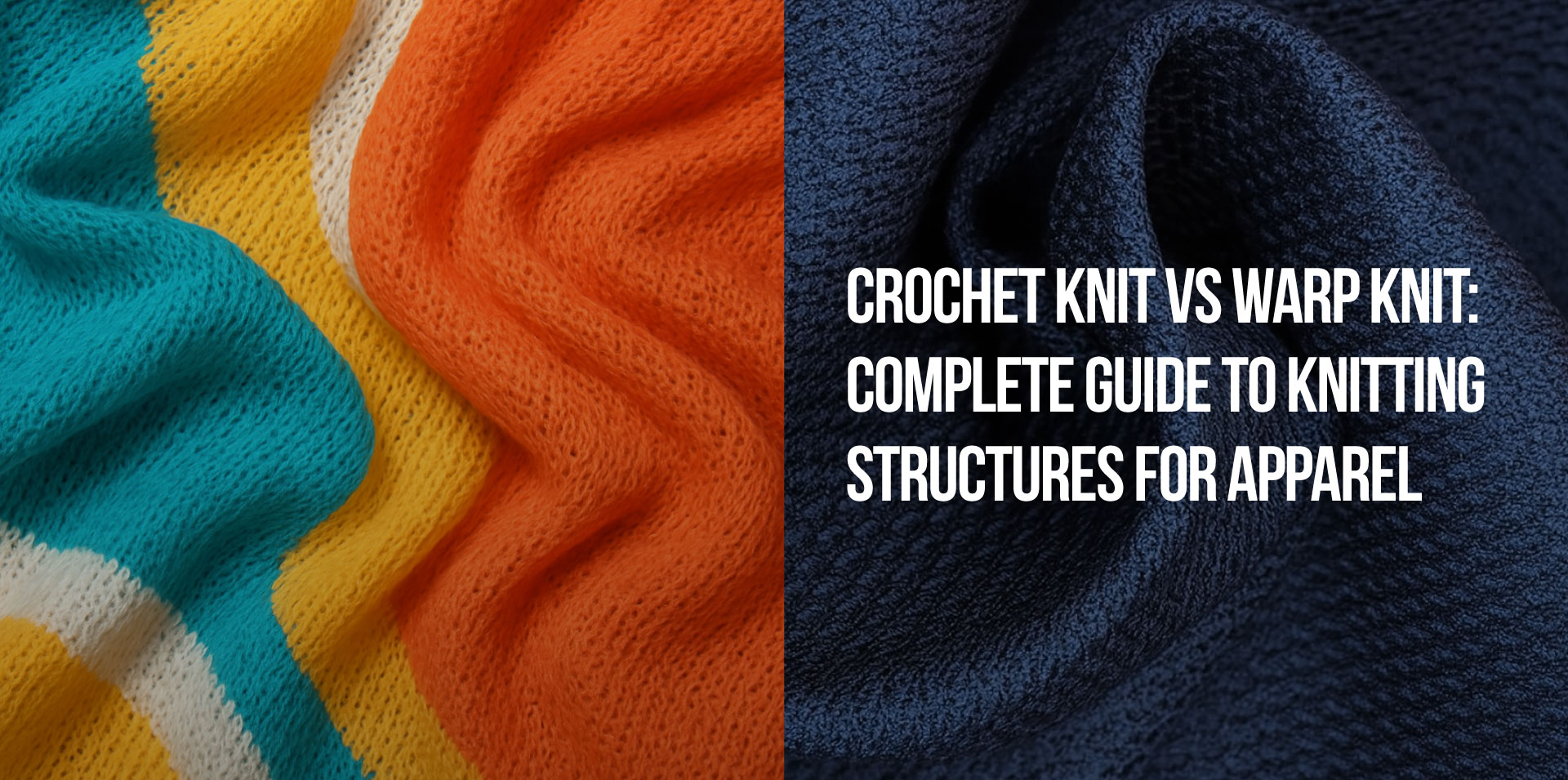
Knitting Structures 101: A Guide to Crochet Knit vs. Warp Knit
Understanding the difference behind the stretch – and why it matters for performance and fashion apparel.
When it comes to textile performance, the difference between crochet knit and warp knit determines whether your fabric stretches beautifully in one direction or provides balanced support in both. But why do some garments feel incredibly soft against your skin while others give you that firm, supportive compression? The answer lies in these two fundamental knitting structures.
Think of knitting structure as the invisible architecture of your favorite garments. It's the foundation that determines whether your workout leggings will move with you during a challenging yoga session or if your everyday t-shirt will maintain its shape after countless washes. Understanding these fundamental differences is the key to making smarter choices about the clothes you wear and love.
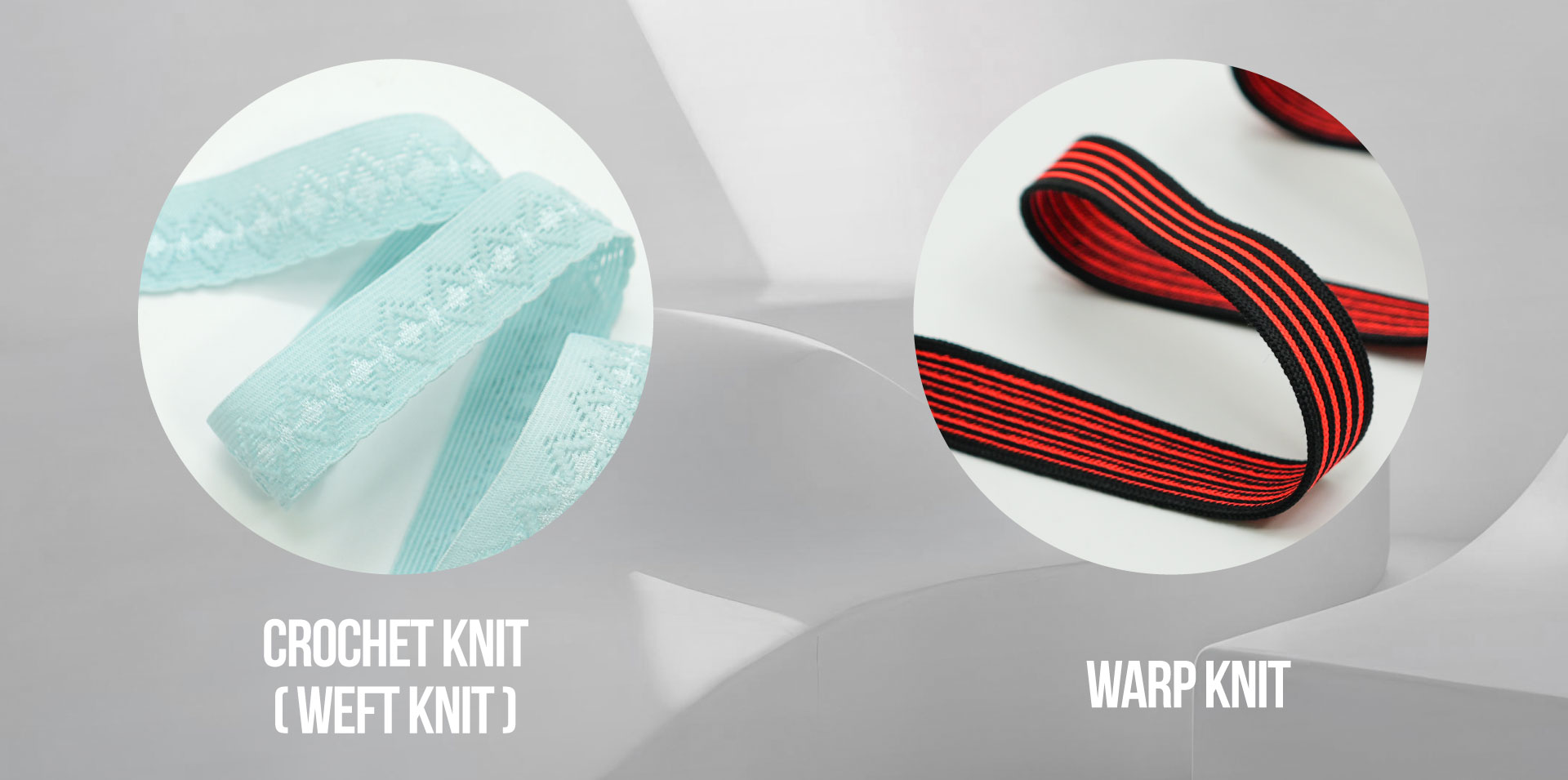
Why Knitting Structure Actually Matters
When you're choosing between fabrics, you're selecting an entire performance profile that will affect how that garment feels, moves, and lasts. The knit structure is working behind the scenes, influencing everything from how breathable your shirt feels during a summer walk to how well your compression wear supports you during an intense workout.
Here's what knitting structure directly controls:
- Stretch and Recovery - How much the fabric gives when you move and whether it bounces back to its original shape
- Breathability and Comfort - The airflow through the fabric and how it feels against your skin
- Durability and Longevity - How well the fabric holds up to washing, wearing, and daily life
- Design Possibilities - The visual textures, patterns, and aesthetic effects achievable
- Production Efficiency - How quickly and cost-effectively the fabric can be made
- Performance Characteristics - Whether the fabric excels in athletic wear, casual comfort, or structured garments
The fascinating thing is that you can take the exact same yarn and create completely different fabrics just by changing how you knit it. It's like having the same ingredients but following different recipes—the end results can be dramatically different.
Understanding Crochet Knit (Weft Knit)
Picture a knitter working with a single ball of yarn, creating fabric row by row. That's essentially what happens in crochet knit, also known as weft knit. The yarn feeds horizontally across the knitting machine, forming loops that connect to create each new row of fabric.
This method creates fabrics with some distinctive characteristics that make them perfect for specific applications. The horizontal yarn direction naturally creates more stretch in that direction, which is why your favorite cotton t-shirt feels so comfortable when you stretch it sideways. The row-by-row construction also means the fabric has a more relaxed, open structure that allows air to flow through easily.
What makes crochet knit particularly interesting is its flexibility—not just in the final fabric, but in the production process itself. Because each row is built sequentially, it's relatively easy to change patterns, colors, or even yarn types mid-production. This makes it ideal for:
- Intimate apparel and lingerie where comfort and softness are paramount
- Casual basics like t-shirts and loungewear that need to feel good against skin
- Soft trims and details that add comfort to garment edges
- Small-batch production where flexibility and quick changes are valuable
- Prototyping where designers need to test ideas quickly
The trade-off? Crochet knit fabrics can be more prone to stretching out of shape over time, and they're generally not as stable as their warp knit counterparts. But for applications where comfort and flexibility are the priority, these characteristics are actually benefits.
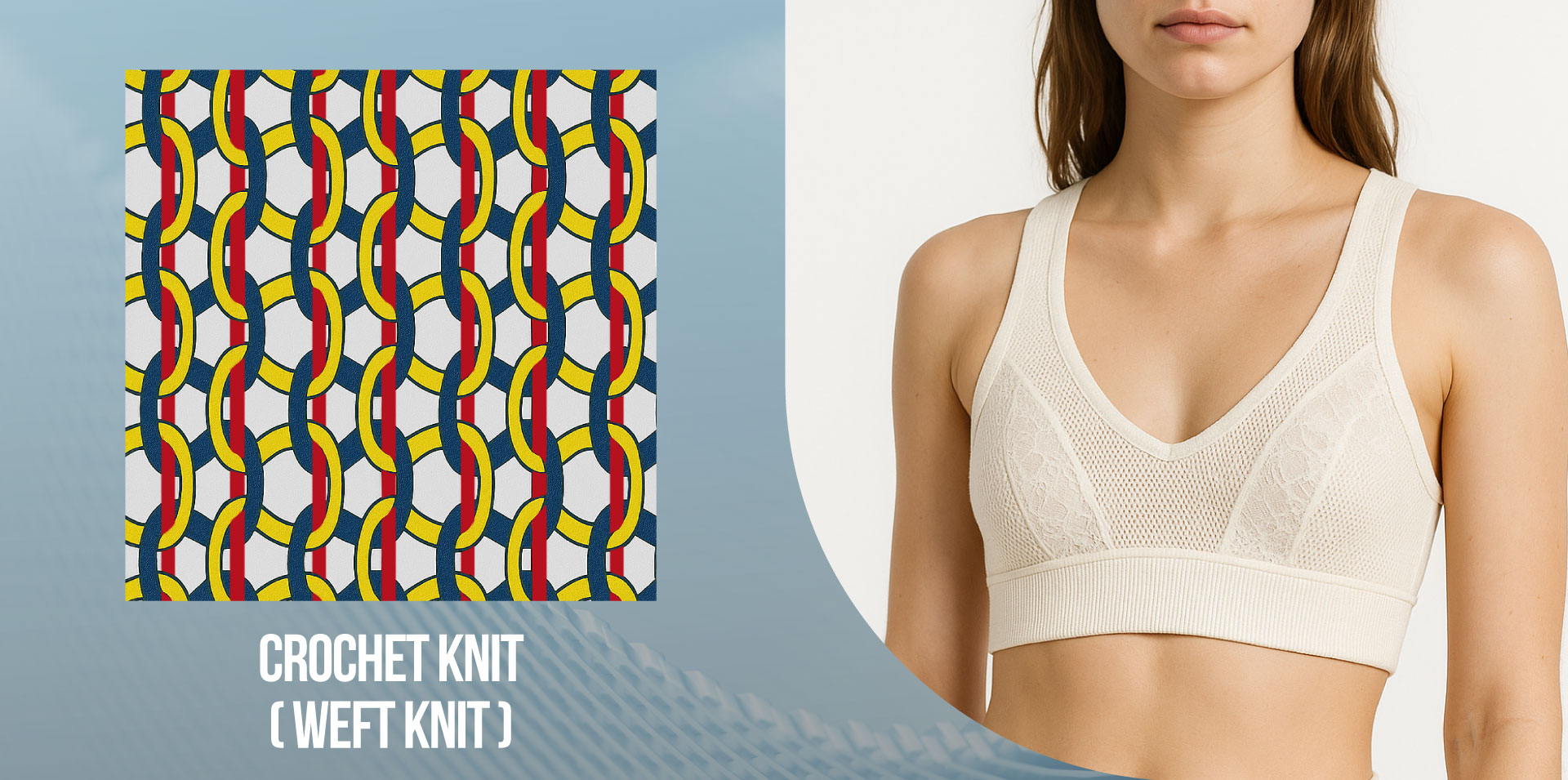
Understanding Warp Knit
Now imagine a completely different approach: instead of one yarn creating the fabric row by row, picture hundreds of yarns working simultaneously, each forming loops vertically down the length of the fabric. This is warp knit, and it creates fabrics with fundamentally different properties.
The vertical orientation of the yarns creates what textile engineers call "dimensional stability"—the fabric maintains its shape and structure much better over time. Unlike weft knit fabrics that can stretch out or distort, warp knit fabrics tend to return to their original dimensions even after significant stress.
This stability comes with some production requirements. Before warp knitting can begin, all those yarns need to be carefully arranged and tensioned in a process called beam warping. It's more complex upfront, but it enables consistent, high-volume production that's perfect for larger orders.
The characteristics that make warp knit special include:
- Balanced stretch that provides support without losing shape
- Run resistance - if you get a snag, it won't create a run like in pantyhose
- Consistent structure that performs predictably wash after wash
- Dimensional stability that maintains garment fit over time
- Strength and durability for high-performance applications
These properties make warp knit the go-to choice for:
- Performance sportswear where consistent support is crucial
- Compression garments that need to maintain their shaping properties
- Engineered trims where precision and consistency matter
- High-volume production where efficiency and consistency are key
- Technical applications where fabric performance is non-negotiable
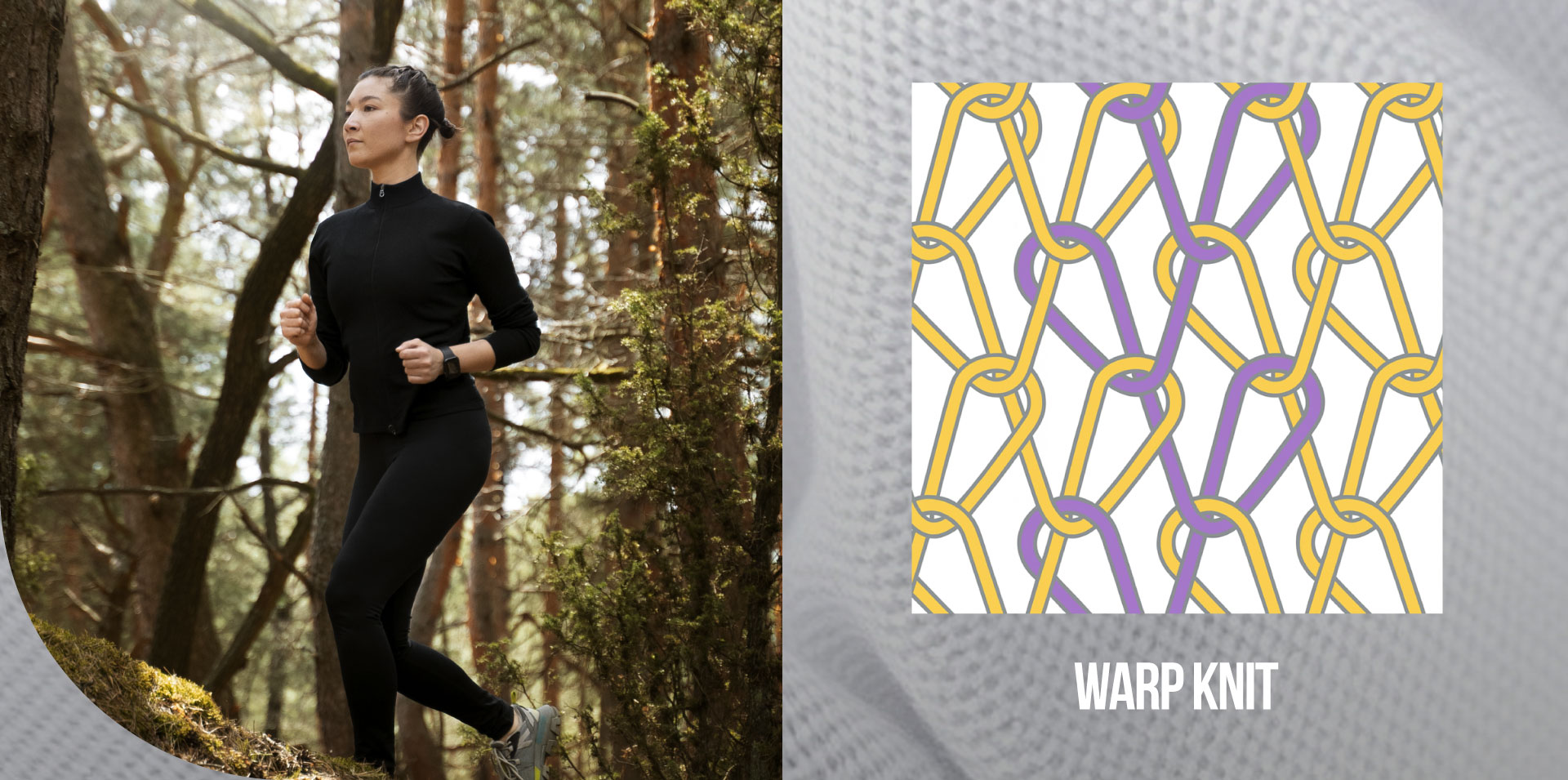
Crochet Knit vs. Warp Knit: The Key Differences
Understanding these two knitting methods becomes clearer when you see them side by side:
Yarn Direction and Structure:
- Crochet knit feeds yarn horizontally, creating rows
- Warp knit uses vertical yarns working simultaneously
Stretch and Performance:
- Crochet knit offers more horizontal stretch and softer hand feel
- Warp knit provides balanced, stable stretch in both directions
Production Characteristics:
- Crochet knit excels in flexible, small-to-medium volume production
- Warp knit is optimized for large-scale, consistent manufacturing
Application Sweet Spots:
- Crochet knit shines in comfort-focused apparel like basics and intimates
- Warp knit dominates in performance wear and technical applications
Design Possibilities
- Crochet knit creates soft, breathable textures with natural drape
- Warp knit enables sleek, engineered surfaces with precise structure
Making the Right Choice
The beauty of understanding these differences is that there's no "better" option—just better applications. Your softest cotton t-shirt probably uses crochet knit construction because comfort and breathability are the priorities. Your high-performance workout leggings likely use warp knit because dimensional stability and consistent support matter more than ultimate softness.
For designers and brands, this knowledge becomes a powerful tool. Understanding how knitting structure affects performance allows you to match the construction method to your specific needs, whether that's creating the most comfortable loungewear or engineering the most supportive activewear.
At ECI, we've seen how the right knitting structure can transform narrow fabric trims from simple functional elements into performance-enhancing components that elevate entire garments. Whether you're developing compression wear that needs to maintain its support properties or creating comfort-focused basics that feel amazing against the skin, understanding these fundamental differences is the first step toward better design decisions.
The next time you put on your favorite piece of clothing, take a moment to think about the invisible architecture working to make it perform exactly the way you need it to. That's the power of knitting structure—and why it matters more than you might think.

